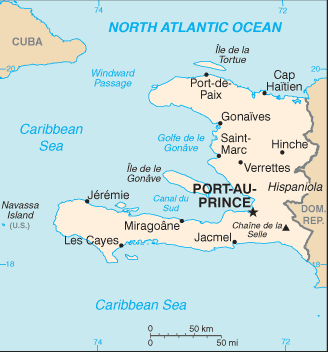A couple of weeks ago, the second anniversary of the devastating earthquake in Haiti came and went with a slew of media reports looking at the difficulties of rebuilding the country: half the pledges from the international community remain unfulfilled, homelessness and displacement are still significant problems, and economic, social and political reconstruction following the country’s huge losses in 2010 is slow. The country dubbed the “republic of NGOs” is still struggling to recover.
Good news for Haiti, however, was revealed late last week by Michael Clemens of the Center for Global Development. Haiti, which had been excluded from America’s largest temporary foreign worker program (the H-2 visa program for temporary and seasonal workers) was added to the list of more than 50 countries eligible to participate, “ending a longstanding policy of excluding Haitians from America’s largest temporary employment-based visa program.” This is important, significant news. It opens the door for economic migrants from Haiti to come seek higher wages for temporary work in the U.S., and will strengthen the flow of remittances to Haiti, providing Haitians with new sources of income to rebuild their businesses, send their children to school and generally be in a better position to support themselves.
According to the Migration Policy Institute, “remittances are among the most tangible links between migration and development.” According to World Bank estimates, officially-recorded remittances flows in 2010 totaled over US$440 billion worldwide. In comparison, official development aid from OECD countries totaled $119.6 billion. Critics note that unless remittances are invested in the country of origin, their long term impact on economic growth and development is limited. Nevertheless, for a country like Haiti, with low-paying wages even for qualified work, the opportunity to earn more and bring a much needed cash and income in the country can have a significant impact, alleviating the need for credit and spurring livelihoods. CGD’s Michael Clemens lays out the benefits:
- Each H-2 worker admitted would typically raise the income of a Haitian family by $19,000 per year.
- A moderate flow of H-2 workers, over ten years, would put almost $400 million into the pockets of Haitian families, including the workers.
- Roughly 30-40% of H-2 workers’ income would be sent to Haiti.
- Each dollar sent to Haiti expands the Haitian economy by three dollars or more.
- Disposable income for Haitian families complements U.S. reconstruction efforts.
Click here for the full analysis
In spite of all the NGO and foreign donor efforts, reconstruction and recovery in Haiti have been slow and laborious. Giving Haitians the possibility of directly participating in the rebuilding of their country by opening up new opportunities for migration is significant, important news.
